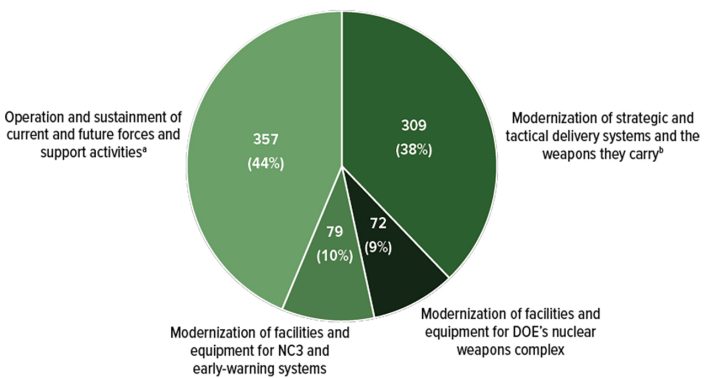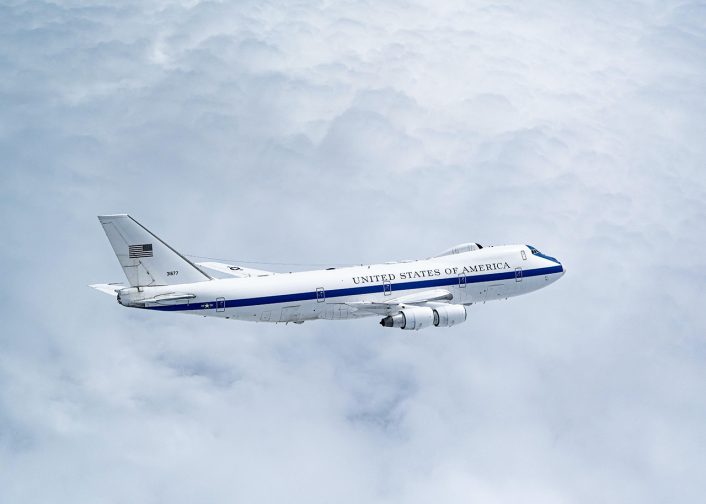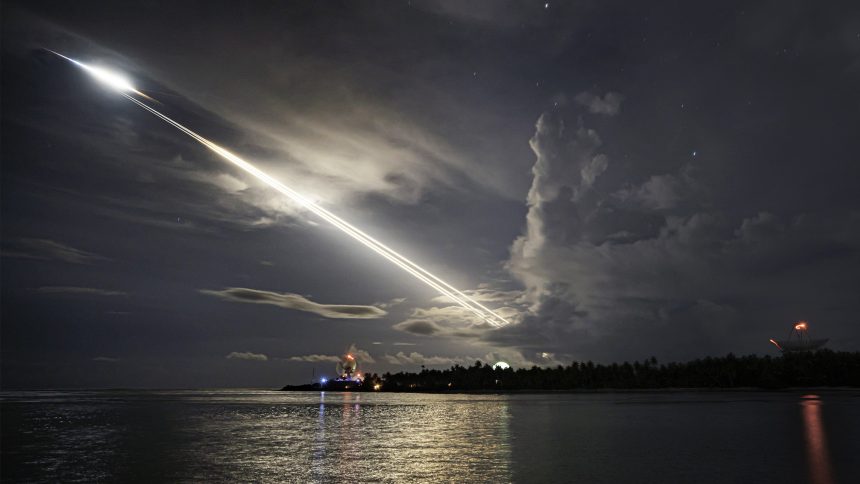New Congressional Budget Office’s projections show that operation and modernization of America’s nuclear weapons will add up to a cost of $946 billion between 2025 and 2034.
According to newly released projections by the Congressional Budget Office, the U.S. nuclear weapons arsenal will cost nearly $1 trillion over next decade. In fact, the projections show that the operation and modernization of America’s nuclear weapons will add up to a cost of $946 billion between 2025 and 2034.
The new figure represents an increase of 25% over the 2023 projection for the 2023-2032 period, which amounted to $756 billion. This is due, the budget office says, to changing estimations as well as increases in the amount budgeted for nuclear forces.
Sobering report from CBO: Nuke modernization cost expected to reach nearly $1 Trillion the next decade, 25% more than projected last year. www.cbo.gov/system/files…
This train wreck has been 15 years in the making as officials downplayed cost/risks of excessive modernization.
[image or embed]
— Hans Kristensen (@nukestrat.bsky.social) April 25, 2025 at 4:56 AM
Their report says that, as budgeted, current plans would need $817 billion of expenditure. However, as the office only includes budgets for individual programs as they are listed in budget requests, it has added an additional $129 billion on top of this figure for its estimate. This is predicted to account for the expected growth in costs in different programs due to cost overruns, changing requirements, and other factors.
The sustained operational costs of the nuclear arsenal will be covered by 44% of the total projected cost, $357 billion. The next largest segment covers the modernization programs of weapon delivery systems and the warheads themselves, adding up to $309 billion. What remains is divided between the modernization of nuclear command, control, and communications (NC3) and early warning systems and the modernization of Department of Energy facilities.

The budget office lists rising costs attributed to the Sentinel intercontinental ballistic missile (ICBM) program as a primary factor in the projected increased expenditure. However, the report also stipulates that it does not include the 81% increase in expected cost of this program following a Nunn-McCurdy Review as the full details and timing of this increase is still to be determined. The LGM-35 Sentinel ICBM is intended to replace the U.S. Air Force’s Minuteman III ICBM force from the 2030s.
The largest single item of expenditure included in the report – $228 billion over the decade – is the U.S. Navy’s ballistic missile submarine fleet. As the maintenance of submarines is an extraordinarily expensive undertaking, this should not come as a surprise. In addition to maintaining the current Ohio class submarines, work is well underway on the construction of next generation Columbia class submarines, which will begin to replace them from 2031.
This segment also includes the maintenance and modernization of the Trident II D5 submarine launched ballistic missile (SLBM) carried by the submarines, and the re-entry vehicles carried by the missiles. A new life extension program for these missiles will see their service through to 2084.

Figures for the U.S. Air Force strategic bomber force are representative of only a proportion of their total cost, as the office recognizes their dual role as both a conventional and nuclear weapons delivery platform. Still, the bulk of costs represented here can mostly be attributed to the procurement of the Northrop Grumman B-21 Raider, as well as the AGM-181 Long Range Standoff Missile.
Costs associated with the U.S. Air Force’s tactical nuclear weapons, meanwhile, decrease compared to previous projections as the B61-12 development program reaches its conclusion.
In terms of NC3, the two largest programs are the replacement efforts for the E-4B Nighthawk and E-6B Mercury. Both of these programs are in the production phase, with the Mercury being replaced by the C-130 based E-130J, and the Nighthawk by a new E-4C variant converted from Boeing 747-8 airframes.
These aircraft are both responsible for the command and control of nuclear forces, designed to survive a first strike by remaining airborne, therefore remaining able to transmit orders. The E-130J will be dedicated to the U.S. Navy’s submarines, as the E-6B will relinquish its role in the command chain for strategic bomber and missile forces back to the U.S. Air Force for integration on the E-4C.

Changing Directions
With the new U.S. administration, we have seen a number of policy changes take effect across the U.S. military but procurement plans have remained largely unchanged – aside from the decision to go ahead with NGAD. President Trump has, on a number of occasions, expressed a desire to get rid of nuclear weapons altogether, and signaled his dissatisfaction with how much the weapons end up costing the country. However, it is difficult to ascertain whether these statements will end up enacted as official policy or remain simply words.
“There’s no reason for us to be building brand-new nuclear weapons; we already have so many,” stated President Trump in February of this year. However, experts have noted that due to massive staffing cutbacks, government offices in charge of administering the U.S. response to and prevention of nuclear proliferation across the world have been left as ‘ghost towns’, meaning any change in policy would likely struggle to be enacted efficiently. Staff cuts in the National Nuclear Security Administration were reportedly swiftly reversed when their nuclear weapons role became apparent.









